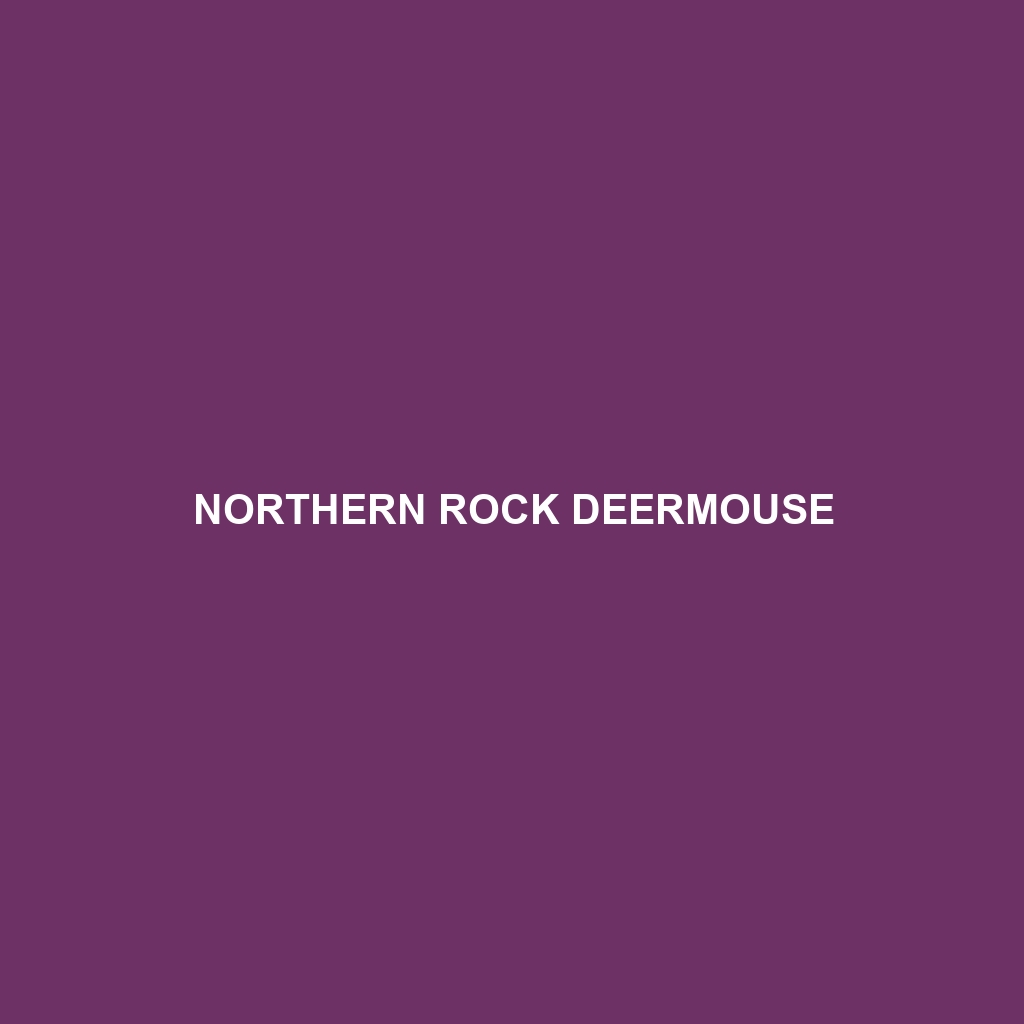Northern Rock Deermouse: A Detailed Species Description
Common Name: Northern Rock Deermouse
Scientific Name: Peromyscus maniculatus rufinus
Habitat: The Northern Rock Deermouse is primarily found in the mountainous regions of the western United States and parts of Canada. These small mammals thrive in rocky and wooded environments, often inhabiting alpine meadows and coniferous forests. They tend to favor areas with ample ground cover, such as shrubs and grasses, which provide shelter and food sources.
Physical Characteristics: Adult Northern Rock Deermice typically measure between 7 to 9 inches in length, including their tails. They possess a soft, dense fur that is generally brown or gray on the upper side, with a lighter cream or white belly. Notably, their fur may present a distinct reddish hue, giving them their common name. Their large eyes and ears, paired with a slender body and long, hairy tail, are characteristic features that help them adapt to their environment.
Behavior: The Northern Rock Deermouse is primarily nocturnal, exhibiting heightened activity during the night. They are known for their agility, often climbing trees and navigating rocky terrains with ease. Socially, they can be solitary or found in small groups. These mice communicate through vocalizations and scent markings, particularly when establishing territory or during mating season.
Diet: The diet of the Northern Rock Deermouse consists mainly of seeds, fruits, and nuts, which they forage for during twilight hours. They have also been observed consuming insects and other small invertebrates, particularly in the warmer months. The omnivorous feeding habits of this species allow them to thrive in various food landscapes, making them adaptable to changing environments.
Reproduction: Northern Rock Deermice typically breed from spring through early fall, with peak activity during the warm summer months. Female mice usually give birth to litters ranging from three to five offspring after a gestation period of around 25 days. The young are altricial, meaning they are born blind and hairless, relying entirely on their mother’s care for survival during their initial weeks.
Conservation Status: Currently, the Northern Rock Deermouse is not classified as endangered or threatened and holds a stable population. However, habitat loss due to urban development and climate change poses potential risks, emphasizing the need for ongoing monitoring and conservation efforts.
Interesting Facts: One fascinating aspect of the Northern Rock Deermouse is its ability to survive harsh alpine winters. They exhibit behavioral adaptations such as burrowing into the snow for insulation and accessing stored food supplies. Additionally, their keen sense of smell aids in navigating their environment, especially during foraging.
Role in Ecosystem: The Northern Rock Deermouse plays a critical role in its ecosystem as both a prey and herbivore species. They contribute to seed dispersal, which aids in plant propagation and growth. These mice serve as a food source for various predators, including owls, hawks, and snakes, thereby maintaining the balance in their natural habitats. Their interactions with other wildlife further underscore their importance in the ecological community.
